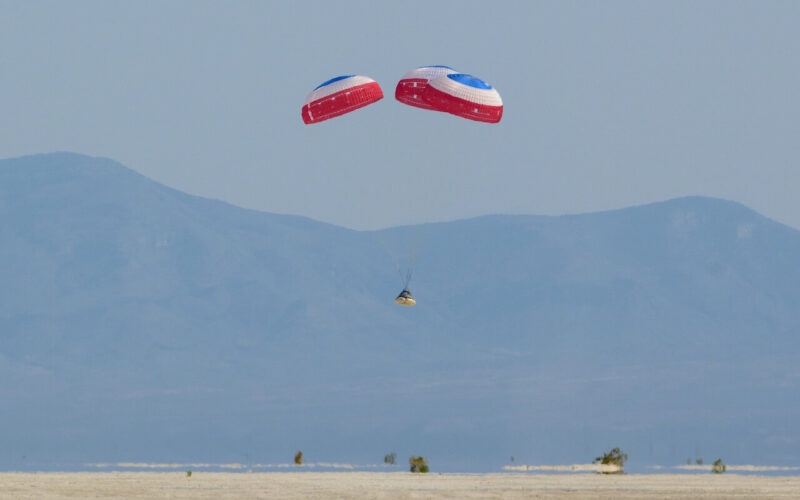Boeing’s CST-100 Starliner spacecraft has returned to Earth after successfully completing an orbital flight test to the International Space Station (ISS).
The uncrewed spacecraft landed at the U.S. Army’s White Sands Missile Range in New Mexico at 17:49 Central Time on May 25, 2022.
Designed to transport astronauts to the ISS, the Starliner launched on a United Launch Alliance Atlas V rocket at 18:54 Eastern time from Space Launch Complex 41 at Cape Canaveral Space Force Station in Florida on May 19, 2022.
The @BoeingSpace #Starliner completed Orbital Flight Test-2, touching down at White Sands Space Harbor.
— NASA (@NASA) May 26, 2022
This flight demonstrated launch, docking to @Space_Station, reentry, and landing — data to help prove that the capsule can safely carry astronauts. https://t.co/URKJoePcSr pic.twitter.com/4hOHBROalb
The spacecraft made its first connection with the space station on May 20, 2022 at 19:28 Central Time.
“We have had an excellent flight test of a complex system that we expected to learn from along the way and we have,” vice president and program manager for Boeing Commercial Crew Program Mark Nappi said in a statement.
“Thank you to the NASA and Boeing teammates who have put so much of themselves into Starliner.”
The test flight, which is part of Boeing’s contract with NASA, marks an important step in certifying the Starliner capsule to eventually carry astronauts into space.
The successful test flight mission is Boeing’s third attempt. In 2019, a maiden uncrewed flight failed to attain the proper orbit, while the next launch attempt in July 2021 had system errors, which caused further delays.
According to Boeing, the successful orbital test flight also demonstrated the following:
-
End-to-end performance of the Atlas V rocket and Starliner spacecraft through launch, ascent, on-orbit, re-entry and landing;
-
Starliner’s autonomous software and the on-orbit operation of its avionics system, docking system, communications/telemetry systems, environmental control systems, solar arrays, electrical power systems, and propulsion systems;
-
Ability to hold docking attitude, receive commands from the space station crew, and command holds and retreats during final station approach;
-
Battery charging, hatch open and close, establishing joint ventilation with the station, file transfer and cargo transfer.

